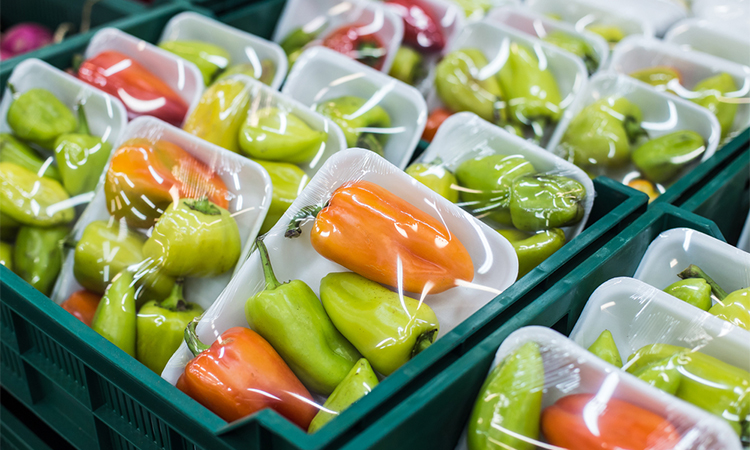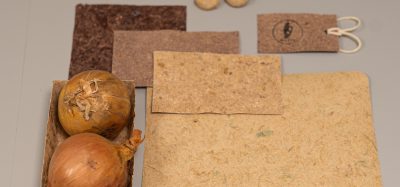Developing recyclable, compostable and sustainable food packaging
- Like
- Digg
- Del
- Tumblr
- VKontakte
- Buffer
- Love This
- Odnoklassniki
- Meneame
- Blogger
- Amazon
- Yahoo Mail
- Gmail
- AOL
- Newsvine
- HackerNews
- Evernote
- MySpace
- Mail.ru
- Viadeo
- Line
- Comments
- Yummly
- SMS
- Viber
- Telegram
- Subscribe
- Skype
- Facebook Messenger
- Kakao
- LiveJournal
- Yammer
- Edgar
- Fintel
- Mix
- Instapaper
- Copy Link
Posted: 7 February 2023 | Ria Kakkad (New Food) | No comments yet
Researchers have found shellac-based coating makes pulp materials suitable for food without using petroleum-based polymers or metals.


Researchers at the Mae Fah Luang University, Thailand, and Queen Mary University of London, UK, have developed a shellac-based coating to improve the gas barrier properties of a recyclable, compostable and sustainably sourced packaging material to make it suitable for instant, dehydrated, frozen and chilled foods.
Moulded pulp, made from renewable materials such as eucalyptus wood or sugarcane bagasse, is widely used as a sustainable packaging material to protect products in shipping, for food serving trays, containers and beverage carriers. According to the paper, published in Polymer International, its production volume represents more than 30 percent of all paper-based packaging materials, and in addition to its renewable feedstocks, it is also suitable for recycling and composting.
However, the materials’ poor gas barrier properties and limited resistance to water and oil make moulded pulps unsuitable for maintaining shelf-life and quality of many products. This is typically resolved by laminating or coating the materials with petroleum-based polymers like polyethylene and a thin layer of metals, usually aluminium, making recycling or composting impractically challenging.
Therefore, the researchers aimed to improve the barrier properties and surface resistance of the moulded pulp while preserving its green profile and environmental sustainability by developing a new coating based on environmentally friendly, renewable and biodegradable materials.
Shellac is derived from a resin secreted by lac bugs and has been produced for centuries for use in products ranging from nail varnishes to furniture lacquer and various dyes.
Missed the news? The Alliance for Beverage Cartons and the Environment has called on the Packaging and Packaging Waste Regulation to make further sustainable changes.
READ MORE
It is a biopolymer of the polyester group and widely used in the medicine and food industries due to its nontoxic nature, thermoplastic behaviour, oil resistance and good moisture barrier properties. It also exhibits good adhesion finish and can be dissolved in low-toxicity solvents. However, a coating layer of pure shellac is not commonly used because of its brittle nature and high oxygen permeability.
In this work, a moulded pulp was coated with a nanocomposite layer consisting of nanofibrillated cellulose (NFC) and shellac to improve its barrier and surface resistance performance. To enhance the compatibility with the shellac phase and increase the water resistance of NFC, modified nanofibrillated cellulose (mNFC) was prepared via an esterification reaction. The researchers also prepared uncoated samples and samples coated with pure shellac for comparison.
The effects of the nanocomposite coating formulation, as well as different thicknesses of the coating layer on the moulded pulp, on the morphology, barrier properties, water and oil resistance, thermal stability and mechanical properties of the fabricated specimens were systematically examined.
The researchers reported water vapour and oxygen transmission rates in the same range as those of conventional food packaging materials such as low-density polyethylene, oriented polypropylene, and polyethylene terephthalate.
Testing of the water contact angle, oil contact angle and oil absorption rate also indicated that the nanocomposite coating layer provided superior water resistance and a promising greaseproof surface to the moulded pulp sheet. The coating layer also enhanced the tensile properties of the sheet samples, especially for the sample coated with shellac and mNFC. The samples achieved good thermal stability (around 250 °C) after introducing the shellac layer with lower thermal degradation temperature, confirming its practical uses for food packaging applications.
Related topics
Packaging & Labelling, Product Development, Research & development






